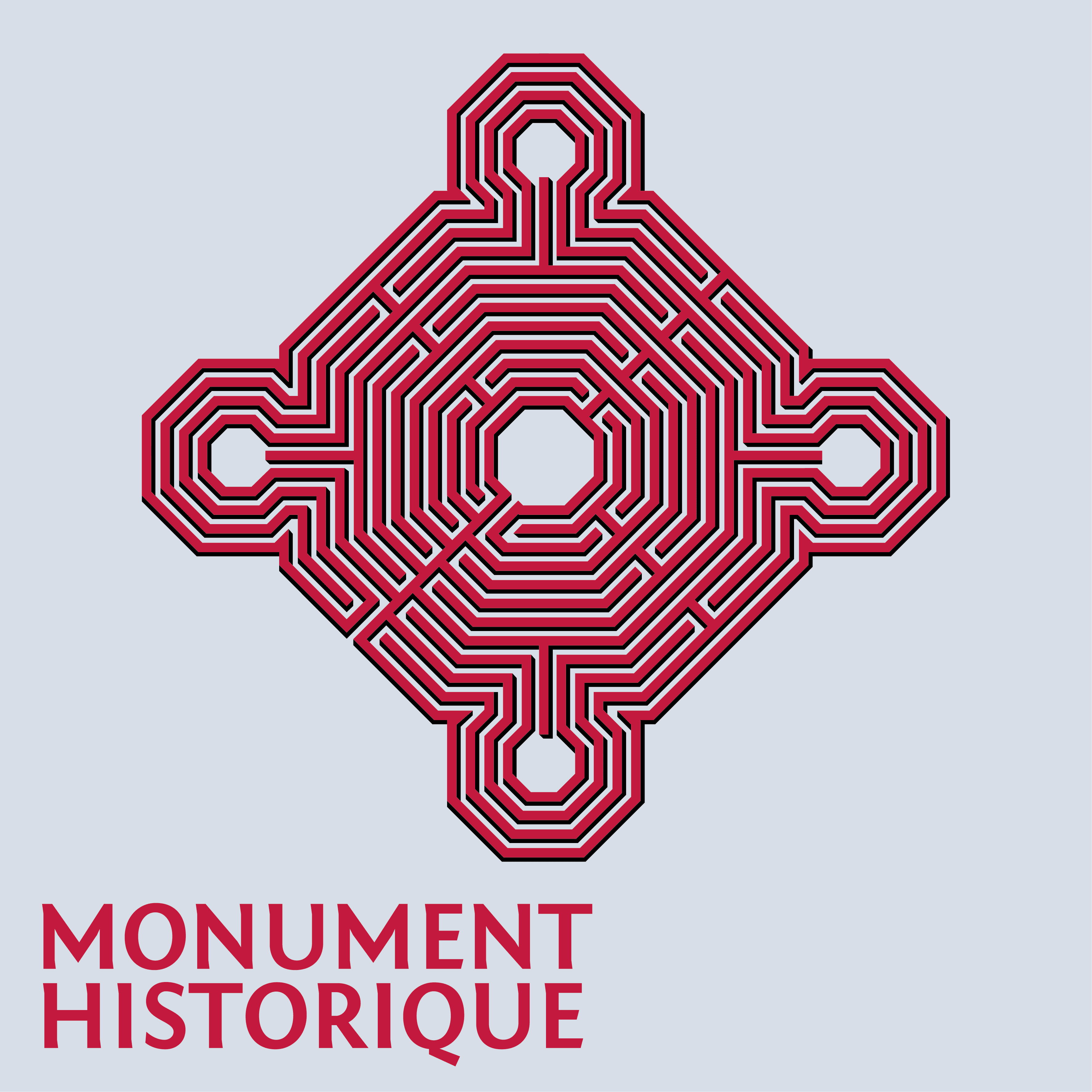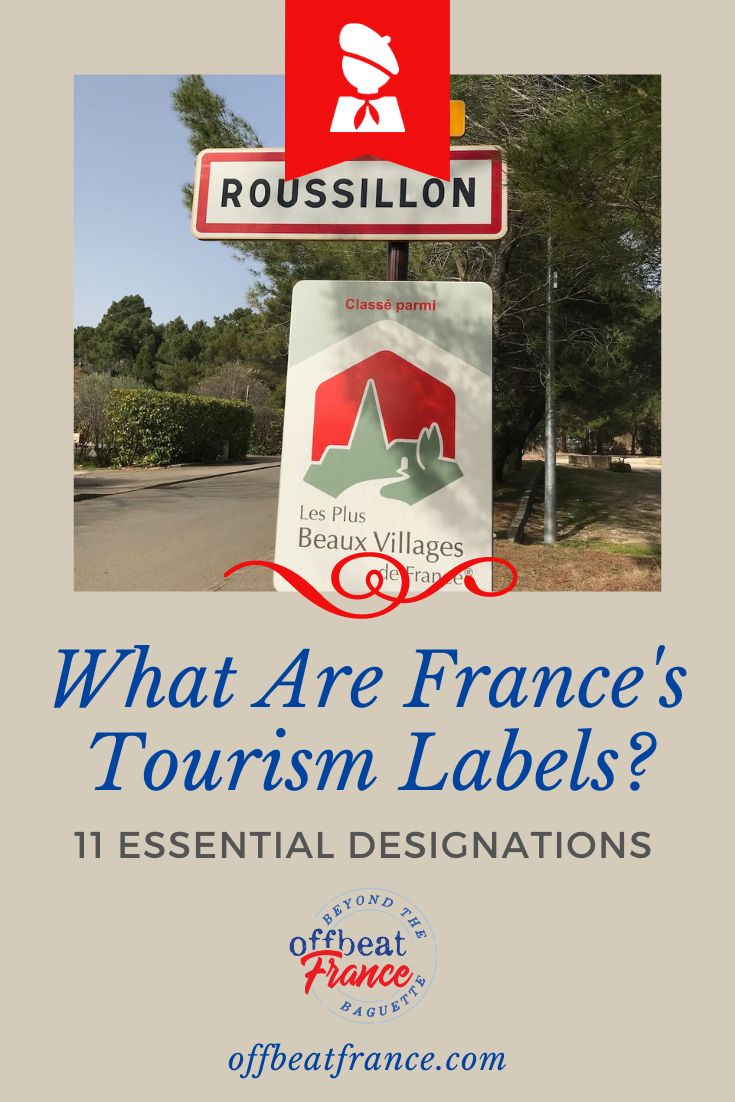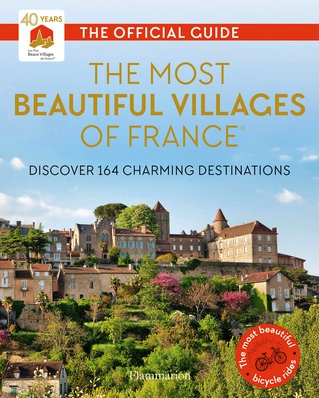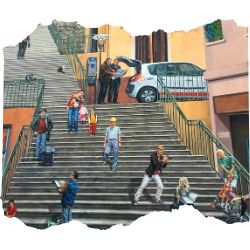Unsure about your French table manners? Click Here to download > > How to avoid these 10 food etiquette mistakes !
- Home ›
- Destinations ›
- French Tourism Labels
11 french tourism labels and designations you need to know
Updated 24 March 2024 by Leyla Alyanak — Parisian by birth, Lyonnaise by adoption, historian by passion
We do love our France tourism labels! They help us distinguish the good from the average: a series of labels and appellations set standards so that we know they're above average.
Oh my... France certainly does love its labels! I'm not sure where this categorization mania comes from, but it seems we're not happy unless things are on a list − especially when it comes to places to visit.
If it doesn't carry a label, it might as well not exist.
We'll want to see the most beautiful villages of France, or the most remarkable gardens, or the most historic villages. We often have a desire to see the best, at least sub-consciously.
These labels help us choose.
They also have other uses:
- they may guarantee the quality of establishments
- they may highlight specific activities or seasons
- they may imply a warm welcome for tourists
NOTE: Pages on this site may contain affiliate links, which support this site. See full Privacy Policy here.
You've probably seen many of these labels in your travels around France, often at the entrance of villages. These labels are awarded by a multitude of institutions: the government, local or regional authorities, paying networks, professional or voluntary groups and many more. One thing is certain: you'll need this guide to figure them out.
The list is confusing, destinations carrying the various labels cannot be compared with one another, and they often overlap. Some are awarded for merit, others are paid for (but must meet certain criteria), while others are the result of voting.
No matter. My goal here is to explain it all, because the label might just affect your choice of a destination. Even if it doesn't, at least you'll know what they all mean...
The best-known French tourism labels
Certain French tourist groupings or associations are so well known you'll see them at some point during your visit. They are visible at the entrance of villages, or will be highlighted in your guidebooks.
These are the ones that will enhance your trip immediately or unveil some aspect of French culture that you should not miss.
🌺 🌺 🌺
Les Plus Beaux Villages de France
The is a label that can transform a village's reputation. Like the fabled Michelin stars whose chefs may do anything to keep, this label speaks for itself. These "most beautiful villages in France" are working hard to preserve their heritage, while welcoming tourists and trying to avoid becoming the next cookie-cutter tourist attraction. To be included, each village must have fewer than 2000 inhabitants and contain at least two historical sites or monuments.
At present (2022), some 168 villages belong to this elite network (only 20% of applicants are accepted) and yes, they are truly magnificent. I have yet to visit one of these without swooning. Wherever you are in France, you'll find one or more of these. Here's the list!
This list of the Most Beautiful Villages in France has everything you need to visit each village: history, major sights, where to stay and eat, special markets and artisans, events, festivals, nearby sights – and walking itineraries through some of France's most gorgeous villages. Buy this book on Amazon
🌺 🌺 🌺
Plus Beaux Détours de France

These 100+ "most beautiful detours of France" are off the beaten path, located in places fewer people visit. Often, all they require is a slight detour – hence the label – from more touristed areas. For example, these routes may take you from the jewels of the Loire Valley chateaux to nearby chateaux that are equally beautiful but far less visited. Most times, you won't even have to go far out of your way. Here's a map with them all.
🌺 🌺 🌺
Villes et Villages Fleuris

If you love flowers, these are the villages (there are nearly 5000) you should seek out: the most flowered. They're not just about pretty flowers, mind you, but about their efforts to bring nature into town with gardens, parks, flowerbox contests and anything that enhances coexistence between plants and people. Check here to see if there's a flowered town or village near you.
🌺 🌺 🌺
Sites Remarquables du Goût

These "remarkable sites of taste" are all about food and drink, and are divided into 17 categories ranging from truffles to cheese to wine. Near my own region in the Bugey of eastern France, you'll find chickens from the Bresse, Comté and Beaufort cheese, fish from the Dombes ponds, and Bugey Cerdon wines. You'll find all the listings here.
🌺 🌺 🌺
Petites Cités de Caractère

These "Small Towns of Character" stand out in some way. Often, these are towns that were once important and that although filled with history and heritage, no longer attract residents because their main functions have moved elsewhere. Yet each of the more than 200 towns with this label has something to offer, from being built around historical abbeys to fame for an ancient market to position at a strategic crossroads.
🌺 🌺 🌺
Villes et Pays d’Art et d’Histoire

The title of "Lands and Towns of Art and History" has been awarded to nearly 200 towns by France's Ministry of Culture. It is aimed at those that have made a particular effort to promote their culture and heritage. The nature of these sites can be wide ranging, from the Auxois region near Dijon to the city of Arles in the south.
🌺 🌺 🌺
Ville et Métiers d’Art

This label "Town and Arts and Crafts" promotes a town's commitment to transmit and preserve arts and crafts and traditional know-how, from glass work to furniture making and design. These towns will often have exhibitions and sophisticated handicraft displays.
🌺 🌺 🌺
Grands Sites de France

The "great sites of France" label is an environmental label awarded by the Ministry of Ecology to areas which have worked hard to rehabilitate and manage their landscape and develop it sustainably. Most of these are natural sites, such as gorges or volcanoes or the wetlands of the Camargue, although some man-made sites do sneak in, like the Pont du Gard, which dates from Roman times but requires robust conservation measures.
🌺 🌺 🌺
Jardins Remarquables

The label "Remarkable Garden" is presented by the Ministry of Culture to those gardens open to the public that are particularly well cared for. It shouldn't be confused with the "most beautiful gardens of France", a private non-profit association of owners of beautiful gardens − but both are worth exploring if you love gardens. Both may overlap, with some of the beautiful gardens also carrying the remarkable garden label.
🌺 🌺 🌺
Musée de France

The label "Museum of France" is awarded by the Ministry of Culture to museums which meet certain public interest criteria that "improve the knowledge, education and pleasure of the general public". More than 1200 French museums have successfully applied for this label, which comes with significant benefits for the museum.
🌺 🌺 🌺
Monuments Historiques

I'll close this section with the most important label: that of National Monument, which ensures these monuments are conserved, and prevent their deterioration if they require upkeep. This isn't just any list – it's the grandaddy of them all, with over 45,000 monuments across the country.
🌺 🌺 🌺
 The village of Pérouges, near Lyon, belongs to the "Most Beautiful Villages of France" network, so people will travel well out of their way to visit
The village of Pérouges, near Lyon, belongs to the "Most Beautiful Villages of France" network, so people will travel well out of their way to visitSpecial interest tourism labels in France
France has so many labels it is impossible to keep track of them all.
Below you'll find some of the more specialized ones, which deal with specific sectors or audiences. The list is selective, and there are many more, catering to everything from Internet-savvy towns to bee conservation communities.
- Tourisme et Handicap, a government label that signals accessible tourism.
- Pavillon Bleu, or Blue Flag, denotes beaches and ports that adhere to the UN's Sustainable Development Goals and meet certain environmental criteria.
- Famille Plus, for towns who have invested in family tourism with appropriate activities and lodgings.
- Station Verte, or green resort, where nature is the greatest attraction, in the countryside or mountains. They also include Villages de Neige, or snow villages, for winter fun.
- Ville Prudente, or careful town, have taken measures to reduce traffic accidents.
- Architecture Remarquable Contemporaine, or remarkable modern architecture, for unusual, innovative or famous structures.
- Maisons des Illustres, where noteworthy figures of French culture or history have lived.
- Villes Sanctuaires, or Sanctuary Cities, for spiritual destinations.
- Villes et Villages Etoiles, for visitors seeking dark skies.
- Villages Etapes, for stops in pleasant areas during your road trips.
Whenever you plan a trip, a thousand criteria go into it. One of them is often quality, which these labels will help you determine. Another is type – and this is where designations can help too.
I happen to like lists almost as much as I like wandering, so when I've erred to my heart's content, I follow along one of these lists and see as many places as I can.
You might also like these stories!
Did you enjoy this article? I'd love if you shared it!








